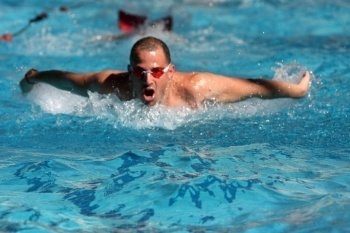Catch and pull technique – why is it important?
The catch and pull technique is one of the most important techniques for swimmers to learn in order to make progress without too much strain. There are many swimmers who think that don’t have a good catch and pull technique, and that this is the reason that they get tired.
In 90% of the cases this is simply not so. Things that influence the movement and the speed are the line of the flow, how relaxed the arm is above, and moving through, the water, that the arm will stretch the correct length, the position of the head, and more.
Once you improve your style a bit, you will feel that you are swimming in a straight line, without cutting the symmetric line. Now is the time to start investing in yourself, and learn how to sweep the water the right way, or as we call it “catch and pull”, meaning how much water you “take” and move with each sweeping stroke.
Obviously, the more water we sweep, the better our progress will be. We will strengthen our muscles, tone them, and so on.
Each season, the best swimmers of the World work 3 complete months on their catch and pull techniques, using several exercises.
We recorded a few exercises for you to include in your swimming sessions. It is important to note that if you feel pressure on the back or shoulders, you should consult with the Olam Hamayim Team on how to get the catch and pull technique right and avoid hurting your body.
- Back dolphin – Dolphin for the back is an amazing practice, interesting, and hard if your body is not relaxed! Our purpose is to create movement using the back of the hand. With the palm of your hand you will create a wave-like movement, and this exercise will teach you how to relax the body in an optimal way, and how to catch water with minimal effort.
- Hand and high elbow – In this exercise we practice with one hand or both hands together. In the beginning of the stroke we try to keep the elbow high and then keep it that way throughout the movement. Many swimmers miss about 30 centimeters at the beginning of the sweep and this makes it time consuming to catch the water. This exercise lets us study how to sweep from the very beginning of the stretch, we don’t lose one millimeter, and the hand does not limp and fall into the water.
- Catch and pull on the back, legs first – Catch and pull on the back, with the legs leading. This might be the most classic and easiest practice. We will keep the hands close to the hips with the palms directed downwards. The thumb will not be more than 30 centimeters from the hips. We let the legs lead so that we won’t make pushing movements in the water. This practice works amazingly for the muscles of the lower arms, and it helps us to sweep the water better.
- Hands push the body to the legs, facing downwards – This is a harder practice than the one described above. (nr 3) It helps us to strengthen the joints of the hand while at the same time relaxing it. We try to push our body backwards. If you find this hard to do, you can use a poly swim float, this way the body can float easier and the practice can go on for a longer period of time.
It is recommended to combine exercise 3 and 4. For an example, 25 catch and pull on the chest, 25 catch and pull on the back which gives us a minimum of 50 movements. This way we can manipulate our catch and pull during the actual swimming.



